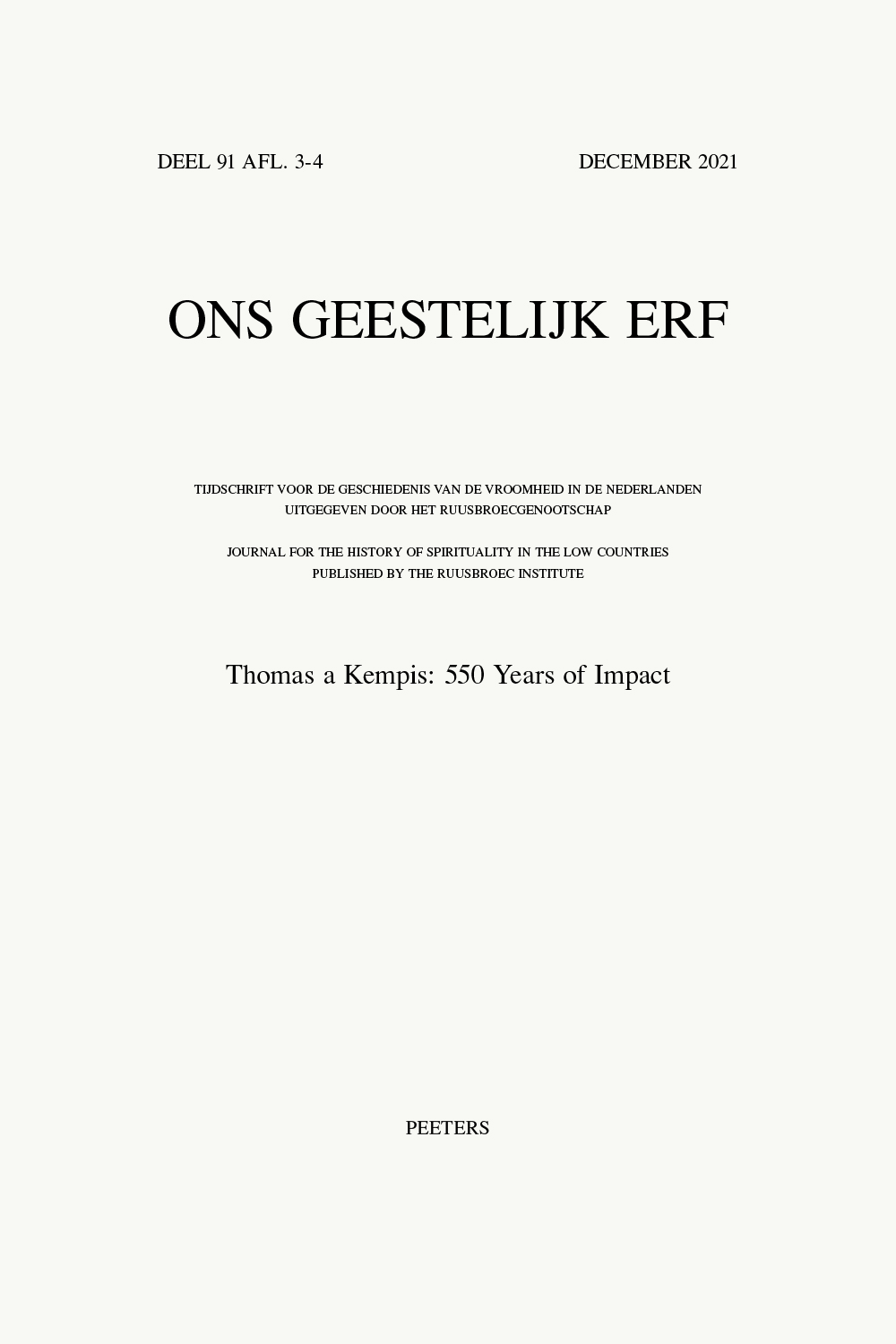next article in this issue  |

Preview first page |
Document Details : Title: Arme vrouwenpersonen, om Goods willen gheherberghet Subtitle: Gemeenschappen van devote vrouwen aan het eind van de veertiende eeuw Author(s): GOUDRIAAN, Koen Journal: Ons Geestelijk Erf Volume: 82 Issue: 2 Date: juni 2011 Pages: 97-135 DOI: 10.2143/OGE.82.2.2071237 Abstract : This contribution focuses on the statutes of a dozen of devout women’s congregations originating in the early decads (1380-1400) of the Devotio Moderna in the western and eastern parts of the present-day Netherlands. Each of these congregations or sisterhouses, except one, survived into the fifteenth century and beyond, evolving either into a house of sisters of the common life or into a tertiaries’ convent or a monastery of regular canonesses. The early statutes of these sisterhouses are read with an eye to the question what information on the religious values cherished by the women accommodated in the houses and on the way these values were articulated, can be gleaned from them. The practical aspects of the organisation of these communities are analysed as well: they appear to offer considerable pluriformity, due to the fact that the participants had to improvise and were obliged to borrow from a variety of existing institutions. The common life as it was practiced later on in the sisterhouses of the Devotio Moderna, had been introduced in some of them, mainly in the west, but was not the standard as yet. The members of the devout congregations had opted for a life of withdrawal from the world and of mortification, revealing itself in reluctance to converse with men, austerity in food and clothing, and suppression of the wish to go into the streets and to intermingle with non-converted people. By a cooperative attitude the sisters contributed to the inner peace of the households, which was highly valued because it was considered to be indispensable for the virtuous life. They were expected to pray for their benefactors. Much stress was laid on the fact that they had been provided with lodging in the sisterhouses ‘purely for God’s sake’. This had been done as a response to their clearly expressed wish to lead a pure christian life, in which the virtue of ‘religion’ would take the lead. Their decision to enter the devout life had to be rewarded without the mistake of falling into simony. In their ‘shelters’, the women considered themselves to be ‘poor women’ (in a near-contemporary testament: pauperes puellae), meaning the destitute who had become God’s chosen ones and who responded to their election by putting their lives in the service of God. Their way of life was not articulated as yet as the ‘common life’ of the primitive Church of Acts 4. In the beginning, the New Devout reserved this ‘ideology’ for the monastic branch of their movement; it came to be applied to the sisterhouses only after a few decads. Instead, these accentuated their poverty as well as their ‘sisterly love’ and the reciprocal edification in virtues as the essence of their congregations. |
|


